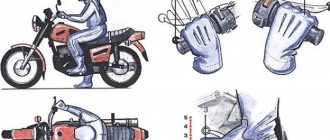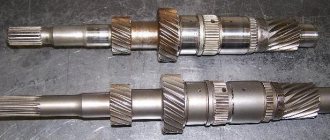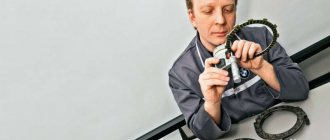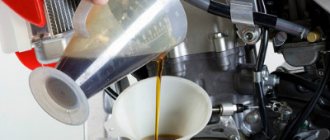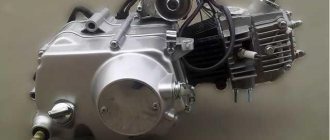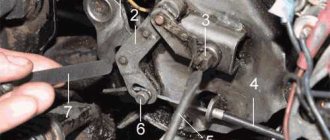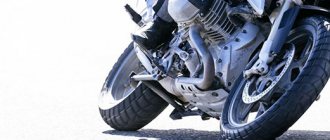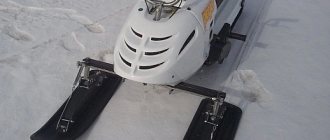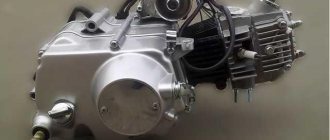Hi all! Many people want to get behind the wheel of a car and enjoy the benefits of a personal car. But before you do this, you have to go through a difficult learning curve. Practice clearly shows that the main problems arise with how to change gears correctly and with mechanics.
Initially, the most difficult thing for a beginner seems to be simply learning how to get going. But in just a few practical sessions this point can be mastered until it becomes automatic.
But switching to a manual transmission while driving is more difficult. This is a gradual process of developing a reflex that allows you to move from one speed to another in a timely manner and without being distracted by the lever itself, almost at the level of intuition.
The key rule is to always use the clutch pedal. In theory, you can learn to shift without a clutch, but then the box won’t last long and will have to be replaced soon. Therefore, when braking and accelerating, the clutch pedal and gearshift lever must work in tandem.
Important nuances
Ideally, the car should drive without jerking, moving from one speed to another. When buying a used car or a new car, all buyers always look at such a detail as the type of gearbox used. Objectively, the easiest car to drive is considered to be an automatic transmission. But it is important to understand that there are a number of types of gearboxes, and not a simple division into manual and automatic. We recently studied with you the features of sequential gearboxes, and also got to know the variator in more detail. I advise you to re-read and update your own knowledge regarding automobile gearboxes. In terms of reliability and durability, classical mechanics still firmly holds the first position.
When used correctly, the car can accelerate quite quickly, squeezing the maximum out of the installed engine. But when the engine is powerful, and the driver does not know how to shift correctly, then no amount of horsepower will help you.
One general principle applies to all manual transmissions. It consists in the fact that first the clutch is depressed, then the speed is switched, after which the clutch pedal is lowered.
How to shift manually without synchronizers
Synchronizers are special mechanical devices that are needed to equalize gear speeds . Without them, switching on is carried out with a crunch and difficulty. In addition, this destroys the transmission, so when turning on the gears, you need to use two techniques - double squeezing and re-throttle.
Double squeeze is used when upshifting.
The essence of this action is as follows: the car accelerates, and then you need to squeeze the clutch and switch to neutral, now release and press again and switch to the highest gear. Of course, this needs to be done as quickly as possible. Re-throttle is an old but true way to keep the transmission alive and one way to avoid losing power when downshifting. It will also be useful for those who use a manual transmission with synchronizers, since when overtaking this will help raise the speed and increase power. Many people have probably seen how a truck driver very often raises the engine speed when slowing down and does this for good reason.
When slowing down or before overtaking, you must depress the clutch, engage neutral, release the pedal and press the gas all the way. The speed will rise and at this moment you need to turn it down. In this situation, the clutch can be dropped. It’s easy to learn these techniques, just practice a little on an empty road, and then you will be able to master the technique of shifting on a manual transmission.
When to switch
Switching should be smooth, but at the same time fast.
Many are rightly interested in when exactly it is necessary to switch from one speed to another. Although there are different cars and boxes, there are averages. Namely:
- The first speed is intended mainly for starting, and is not used for active driving. The current speed here is from 0 to 20 kilometers per hour;
- The second speed is accelerating and is used for movement at low speed in the range from 20 to 40 kilometers;
- The driver must switch to third when he needs to accelerate from 40 to 60 kilometers per hour;
- The fourth is suitable for speeds from 60 to 80 kilometers per hour;
- Fifth and sixth speed for driving over 80 kilometers per hour.
These numbers are approximate and average, as there are a number of other factors that affect driving.
The presented diagram is relevant for cars that are not loaded and move along the road without resistance in the form of sand, deep snow or steep inclines. If there is such resistance, then it is recommended to switch to the next gear a little later.
Motorists and driving instructors have developed a useful reminder that they recommend that a beginner remember. The bottom line is this:
- It is always recommended to use first gear solely for starting;
- After the start, you should immediately turn on second speed;
- Second gear serves as acceleration speed on a manual transmission;
- The third is optimal when overtaking;
- The fourth performs best when driving in urban conditions;
- The fifth and sixth are used for expressways, highways and highways.
You can also shift out of order if necessary, shifting from high to low to apply engine braking.
There are a number of visual videos on the Internet about how to properly operate the gearshift lever on a manual car. Both high and low gears are discussed in detail.
When is it necessary to change gears in a car?
Over time, drivers get used to it and intuitively feel when to upshift or downshift. But novice motorists can use the following approximate figures:
- — 0–25 km/h;
- — 20–40 km/h;
- — 40–60 km/h;
- — 60-90 km/h;
- - over 90 km/h.
Often, first gear is used to get the car moving; the second is for overclocking. The third speed is suitable for driving around the city and other populated areas. The fourth is used for overtaking. It is recommended to switch to fifth on expressways, highways, and autobahns.
But remember that these are approximate parameters and when driving you need to take into account the technical characteristics of the car, road conditions, terrain, etc. The main criterion for changing from gear to gear is the smoothness of the car.
Switching process
When driving straight and during a turn, the driver needs to change the current speed set on the mechanics.
This is done according to a certain algorithm, which can be represented as follows:
- With a tight movement, the clutch pedal is pressed to the floor with the left foot;
- At the same time, you must release your foot from the gas pedal;
- smoothly but quickly select the desired gear on the box;
- when passing the lever, you first return to neutral, and then to the required speed;
- then the clutch is released;
- at the same time, work begins with the gas pedal so as not to lose speed and revolutions;
- After the clutch is fully released, good gas is added.
There are no strict and rigid restrictions in terms of the sequence of transitions at speed. Nobody forces you to shift in a strictly specified order, from 1st to the last gear.
But if you skip speeds, then you will have to spend more time accelerating and the speed will begin to drop.
About mechanics and automatic machines
Despite the fact that automatic transmissions have ceased to be a curiosity for our fellow citizens, traditional mechanics are still popular and widespread. To avoid having to spend money on a new gearbox, it is important to understand the basic rules and techniques for smooth gear shifting.
The mechanics are designed to smoothly and evenly distribute the torque produced by the engine. A manual transmission, which is commonly called mechanical, usually includes from 4 to 6 different gears, but most often on modern cars there are 5. This is not counting the reverse speed, which is also called reverse. It is the clutch that is the connecting element between the engine and the gearbox. In engagement with the crankshaft, which constantly rotates, is the gearbox input shaft. It is the clutch that allows these units to be separated and connected again without jerking.
Refilling a car air conditioner: why it can be dangerous and how not to make a mistake
The mistake of beginners is usually standard, and it lies in the inconsistent action of the manual lever and the clutch pedal. As a result, the car loses speed and sometimes stalls.
Motorists who have only recently gotten behind the wheel are often easily identified not only by the U icon on the glass, but also by absent-minded and abrupt switching.
When the car starts moving, inexperienced drivers regularly release the clutch early. As a result, the car jerks, and the transmission itself gradually fails.
Considering the speed ranges relevant for shifting gears, many believe that when the car is not traveling more than 40 km/h, there is no need to switch from 2nd to 3rd gear. But remember that a higher gear does not necessarily require an increase in speed. You can safely push the third, but at the same time drive the 40 kilometers set by the limit sign.
A higher gear only allows you to go faster. That is, when choosing speed 3, it will be easier for you to accelerate from 40 to 80-100 kilometers per hour, it will take less time and the engine will behave better than when accelerating from speed 2. Having the ability to speed up does not obligate you to speed up.
How to shift when overtaking
Everything here is also quite simple, but you need to know one important detail. By driving in higher gear, you can accelerate to higher speeds, saving fuel, but in a longer period of time. Time plays an important role when overtaking, because the longer it takes, the more dangerous the maneuver becomes, so it is recommended to switch the gear down and overtake the car at higher speeds. At the end of the maneuver, you can switch to the next speed. The last stage is braking . It is quite difficult to learn this, but it is quite possible. If you need to slow down very quickly, then quickly press the clutch and brake. This technique can only be used in emergency cases. For everyone else, you need to let off the gas and apply the brake. As soon as the speed drops to the next gear, depress the clutch without releasing pressure on the brake and engage a lower gear. You now need to release the clutch in the same way as when starting to move. Once you shift into 2nd gear, further braking can be done using the clutch.
Gears on a motorcycle. Switching principles.
First, let's figure out why you need to change gears on a motorcycle at all. Essentially, shifting gears allows you to adjust the speed of rotation of the engine crankshaft to the speed of rotation of the drive wheel. Accordingly, the question “Which gear should I choose for this speed?” can be reformulated as “What engine speed should I choose for this speed?” In practice it looks like this:
- If the revs are too high, we shift up.
- If, on the contrary, it is too low, then down.
Thus, working with the gearbox comes down to maintaining engine speed in the optimal range for our current task.
What speed should I choose?
How to understand which speed is optimal in a given situation? To understand this issue, it is worth taking a look at the engine power graph of your motorcycle. This is quite strange, but manufacturers usually do not provide such a schedule. Fortunately, such a schedule can be found online for most motorcycles.
As an example, here is a graph from a Honda CB400SF motorcycle
The photo shows two graphs:
- Graph of torque versus crankshaft speed.
- Graph of power versus crankshaft speed.
Torque graph
It's easy to see that it's not even at all. This means that the engine operates with different efficiency at different speeds and produces different torque. Using the torque graph, it is easy to determine in which rpm ranges the engine operates most efficiently.
Power graph
Regarding power, this is nothing more than the product of torque and crankshaft speed, expressed in radians per second. Power is obtained in Watts. If we want to operate with more familiar horsepower and revolutions per minute, then to get power, we need to multiply the torque by revolutions and divide by 7032. This relates to the question of what is better and more necessary – power or torque. In fact, an engine that has more torque at some speeds will have more power at the same speeds.
That is, the very formulation of the question - which is better, power or torque - is incorrect without specifying the tasks and the desired operating speed range.
Over-gas or clutch?
So I recommend that you regularly, every time you downshift, use the throttle and, preferably, double depressing the clutch pedal. By throttling, you will change gear faster, smoother and safer for both road traffic and vehicle parts than by smoothly releasing the clutch pedal. Of course, it’s difficult to master re-gasping, but if you do it, I’m afraid you’ll like it so much that you won’t be able to tear it away! And then you won’t be jailed for a machine gun :)))
